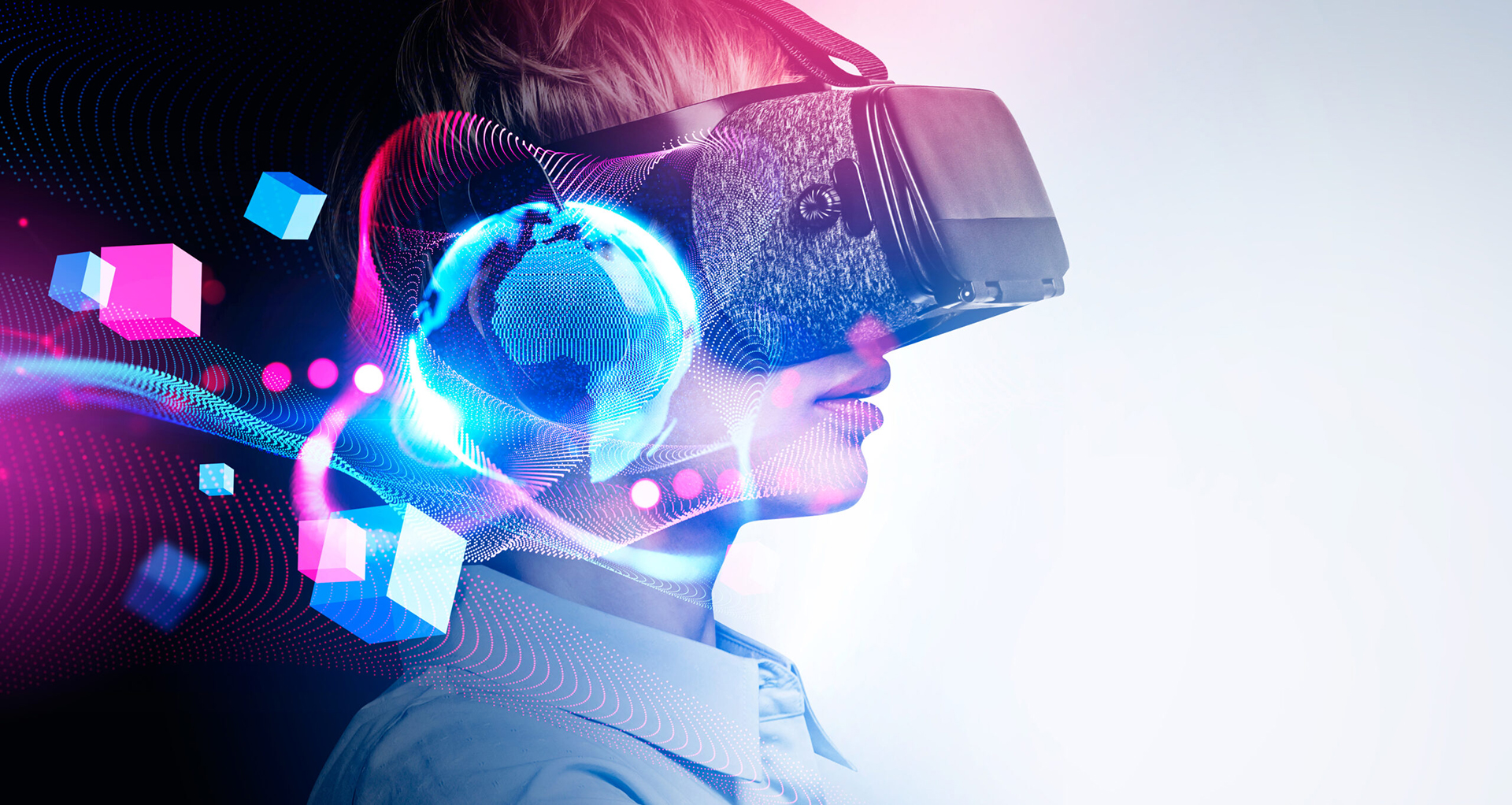
The metaverse is a term that's becoming increasingly prevalent in discussions about the future of technology. At its core, the metaverse represents a fusion of physical and digital worlds, brought to life through a combination of cutting-edge technologies. It’s a persistent, immersive virtual universe that allows for unprecedented levels of interaction and creativity.
Virtual Reality (VR) and Augmented Reality (AR)
Virtual Reality (VR): VR provides fully immersive experiences, allowing users to step into entirely digital environments. Using VR headsets like the Oculus Rift or HTC Vive, users can interact with 3D worlds in real-time, creating a sense of presence and immersion that’s unparalleled by traditional screens.
Augmented Reality (AR): AR overlays digital content onto the physical world. Devices like smartphones and AR glasses (e.g., Microsoft HoloLens) superimpose information and virtual objects onto our surroundings, enhancing the way we interact with our environment.
Blockchain and Non-Fungible Tokens (NFTs)
Blockchain: This decentralized ledger technology underpins many aspects of the metaverse, ensuring security, transparency, and trust. It’s essential for managing digital assets, identities, and transactions within the metaverse.
Non-Fungible Tokens (NFTs): NFTs are unique digital items authenticated using blockchain technology. In the metaverse, NFTs can represent ownership of virtual goods, real estate, and other assets, providing a way to create and trade unique digital items.
High-Speed Internet and Advanced Computing
High-Speed Internet: Ubiquitous high-speed internet is crucial for the metaverse, enabling seamless, real-time interactions in a virtual space.
Advanced Computing: Powerful GPUs and CPUs drive the complex simulations and renderings required for immersive VR and AR experiences, making the metaverse a reality.
The metaverse is a product of decades of technological advancements. From the development of the internet to the rise of VR and AR, each step has brought us closer to a fully realized digital universe. The significance of the metaverse lies in its potential to revolutionize how we work, play, and interact.
MetaMandrill's Definition
MetaMandrill defines the metaverse as a persistent, interactive system where the physical and digital worlds merge. It emphasizes the metaverse as a collection of virtual worlds, accessible through VR, AR, and other technologies, offering endless possibilities for interaction and creativity.
XRToday's View
XRToday sees the metaverse as a new, more immersive form of social media. It highlights VR, AR, and blockchain as foundational technologies that create a holistic digital environment, enhancing how we create and consume content.
Merriam-Webster's Take
Merriam-Webster describes the metaverse as "a real word for a virtual world," highlighting its transition from science fiction to reality. It compares the metaverse to a digital multiverse, filled with parallel virtual worlds.
New York Post's Perspective
The New York Post defines the metaverse as a shared digital space that can substitute physical interactions. It emphasizes the immersive nature of the metaverse, which allows for multi-dimensional interactions and has become particularly significant during periods of physical isolation.
Immersion
Immersion converts 2D content into 3D virtual worlds, enhancing engagement and CRM conversion rates. They focus on building immersive metaverse content from diverse sources.
Virtualtech Frontier
Virtualtech Frontier creates experiential events and virtual environments, leveraging their background in game development to offer immersive experiences that boost brand engagement.
PocketWorlds
PocketWorlds emphasizes social interaction and creativity within the metaverse. Their platform, Highrise, boasts millions of users and a thriving digital economy, showcasing the metaverse's potential for rich social experiences.
Decentralized Autonomous Organizations (DAOs): DAOs use blockchain technology to guide their operations, functioning as digital constitutions. They are a key aspect of the metaverse, enabling decentralized decision-making and governance.
NFTs: NFTs are integral to the metaverse economy, providing a way to create, own, and trade unique digital assets. They add a layer of authenticity and value to digital items, making them collectible and significant within the metaverse.

The metaverse is more than just a buzzword; it's a technological revolution poised to transform how we interact with the digital world. By understanding the technologies driving it and the diverse perspectives shaping it, we can better appreciate its potential and explore this exciting new frontier. As we continue to innovate and build upon these foundations, the metaverse will undoubtedly become an integral part of our digital lives.
This website uses cookies to improve your experience. We'll assume you're ok with this, but you can back-out if you wish.